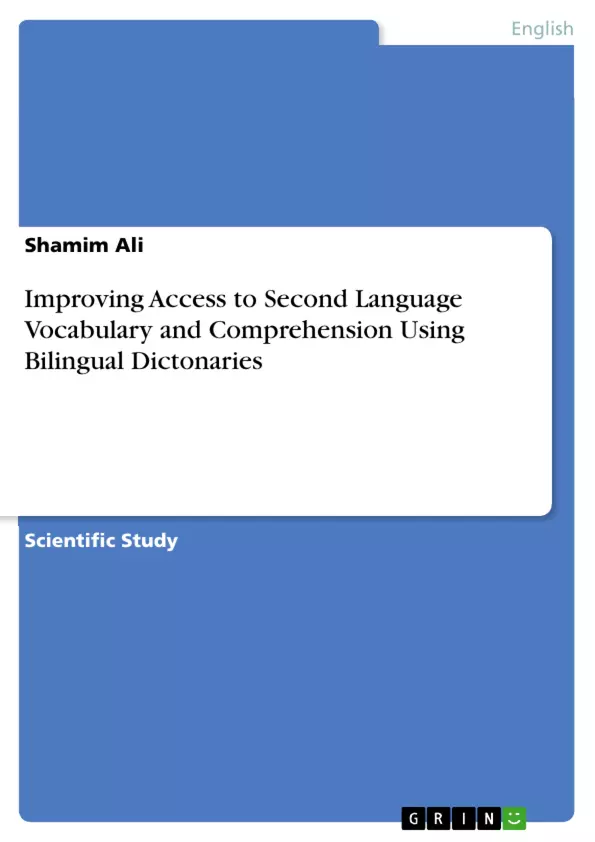The main aim of the present study is to examine the use of Bilingual dictionary in Second language Reading Class, Secondly, how does the bilingual dictionary accelerate the process of learning second language? This research describes an experiment to find whether Bilingual dictionaries are faster to use than monolingual dictionaries. Monolingual dictionary works well for advanced learners. In fact, the unknown words advanced learners encounter are usually more complicated that they need more complicated explanations. Whereas Bilingual dictionary works well for beginners, because they become able to research and translate words from all parts of speech utilizing a bilingual dictionary. It enhances their confidence level and increases their vocabulary on their own in a short period of time.
Inhaltsverzeichnis (Table of Contents)
- INTRODUCTION
- LITERATURE REVIEW
- METHODOLOGY
- RESULTS
- DISCUSSION
- CONCLUSION
- REFERENCES
Zielsetzung und Themenschwerpunkte (Objectives and Key Themes)
The study investigates the use of bilingual dictionaries in second language reading classes, focusing on their impact on vocabulary acquisition and reading comprehension for learners of English as a Second Language (ESL). The research aims to demonstrate the effectiveness of bilingual dictionaries compared to monolingual dictionaries, particularly in terms of time efficiency and comprehension.
- The role of bilingual dictionaries in second language vocabulary acquisition
- The effectiveness of bilingual dictionaries in improving reading comprehension
- The time efficiency of using bilingual dictionaries compared to monolingual dictionaries
- The impact of bilingual dictionaries on learners' confidence and motivation
- The potential advantages and limitations of using bilingual dictionaries in ESL classrooms
Zusammenfassung der Kapitel (Chapter Summaries)
- Introduction: This chapter sets the context for the study by discussing the linguistic landscape of Pakistan, highlighting the significance of English as a second language in the country, and emphasizing the challenges faced by ESL learners. The chapter also touches upon the various approaches to English language teaching in Pakistan and the rationale behind the study's focus on bilingual dictionaries.
- Literature Review: This chapter explores existing research on the use of dictionaries in language learning, particularly focusing on the comparison between monolingual and bilingual dictionaries. The review examines the theoretical frameworks and empirical findings that support the use of bilingual dictionaries in ESL classrooms.
- Methodology: This chapter details the research design and procedures used in the study, including the participants, materials, data collection methods, and data analysis techniques. It provides a clear and concise overview of the methodology employed to gather and analyze evidence related to the research questions.
Schlüsselwörter (Keywords)
The primary keywords and focus topics of this text include: bilingual dictionaries, monolingual dictionaries, second language acquisition, vocabulary acquisition, reading comprehension, time efficiency, ESL learners, Pakistan, language policy, language learning, pedagogy, communicative language teaching, learner confidence.
- Quote paper
- Dr. Shamim Ali (Author), 2010, Improving Access to Second Language Vocabulary and Comprehension Using Bilingual Dictonaries, Munich, GRIN Verlag, https://www.grin.com/document/176567



